
|
|
|
|
|
|
2001
Wikipedia is launched
Wikipedia is a free, web-based, collaborative, multilingual encyclopedia project. Launched on 15th January 2001, it went on to become the largest and by far the most popular general reference work on the Internet. By 2011, more than 18 million articles (3.7 million in English) had been written by volunteers from around the world.
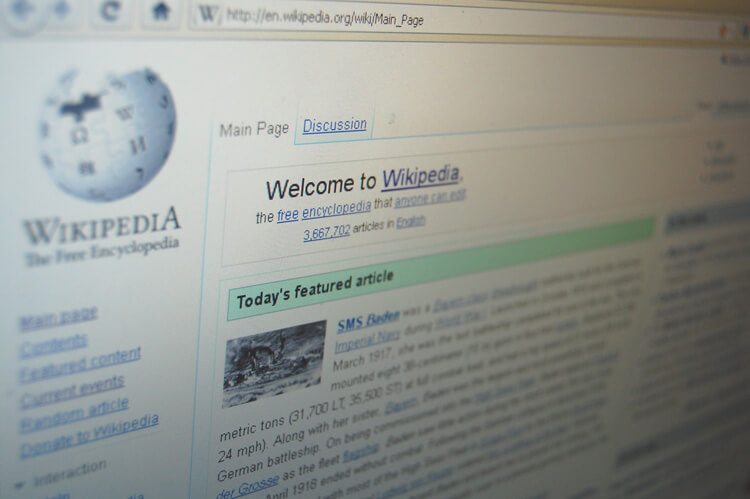
George Bush is sworn in as the 43rd President of the United States
Following a controversial election result, former Texas governor George Bush was sworn in as U.S. President on 20th January 2001. Though he originally outlined an ambitious domestic agenda, his priorities changed significantly after the terrorist attacks of the same year. Wars were waged in Afghanistan and later Iraq, while significant debates regarding immigration, healthcare, Social Security, economic policy, and treatment of terrorist detainees took place within the US.
Over an eight year period, Bush's once-high approval ratings steadily declined, while his disapproval numbers increased significantly. In 2007, the U.S. entered into its longest post-World War II recession and the administration responded by enacting multiple stimulus packages.
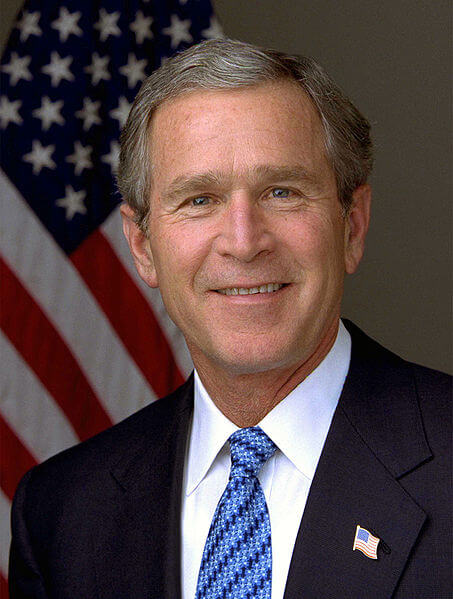
7.6 magnitude earthquake in Gujarat, India
On 26th January 2001, a major earthquake struck India. The epicentre occurred near the village of Chobari, Gujarat, in the country's northwest, and originated at a depth of 17.4 km (10.8 mi).
With a magnitude of 7.6 and a maximum of X (Extreme) on the Mercalli intensity scale, it resulted in devastating casualties and severe damage to infrastructure – killing up to 20,023 people, injuring another 167,000 and destroying 340,000 buildings.
The Indian military provided emergency support, while international assistance arrived from organisations such as the Red Cross, along with millions of dollars in relief aid from other countries.
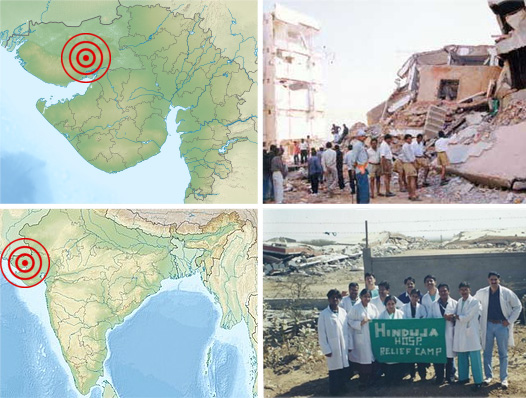
Image credits: click here.
NEAR Shoemaker arrives at Eros
On 12th February 2001, the NEAR Shoemaker spacecraft touched down in the "saddle" region of 433 Eros, a near-Earth object, becoming the first spacecraft to land on an asteroid.
The Applied Physics Laboratory (APL), part of the Johns Hopkins University in Maryland, USA, designed the robotic spacecraft for NASA. It launched in 1996 and rendezvoused with Eros in February 2000, orbiting it several times over the next year, before touching down on the surface.
NEAR's primary scientific objectives included returning data on the bulk properties, composition, mineralogy, morphology, internal mass distribution, and magnetic field of Eros – an S-type asteroid roughly 13 × 13 × 33 km in size, making it the second largest near-Earth asteroid. The secondary objectives included studies of regolith properties, interactions with the solar wind, possible current activity as indicated by dust or gas, and the asteroid spin state.
In addition to its main instruments and camera, the spacecraft carried a radio science experiment, which used a tracking system to estimate the gravity field of the asteroid.
On 28th February 2001, NASA received the last data signals from NEAR Shoemaker before it shut down. A final attempt to communicate with the spacecraft on 10th December 2002 proved unsuccessful, likely due to the extreme low temperatures (−173 °C, or −279 °F) it experienced while on the surface.
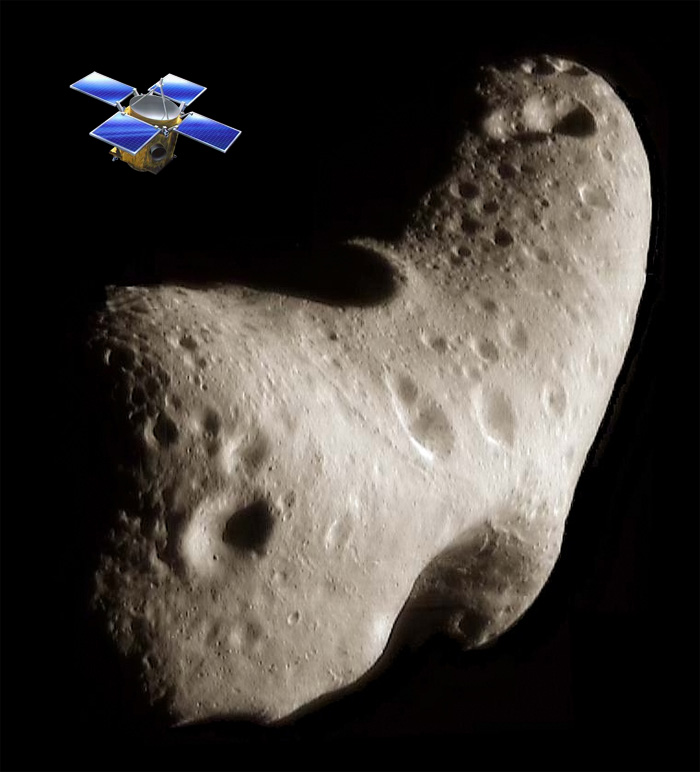
Foot-and-mouth outbreak in the UK
On 19th February 2001, a severe foot-and-mouth outbreak took hold in the UK, with devastating impacts on both agriculture and tourism. This highly infectious viral disease affects cloven-hoofed animals, including cattle, sheep, goats, and pigs. While not a significant threat to human health, it can lead to widespread economic damage, due to loss of livestock. The disease causes fever and blister-like sores on the tongue and lips, in the mouth, on teats, and between hooves. When the blisters burst, they leave raw, painful areas that cause lameness and reluctance to eat or move. This can lead to weight loss, reduced milk production, and in some cases, death, especially in young animals.
Farmers in the UK reported over 2,000 cases of the disease, leading to the enforced slaughter of more than six million sheep and cattle in an attempt to halt the spread of the virus, making it the worst foot-and-mouth outbreak in the country's history. By the time it ended in October 2001, the crisis had cost the UK an estimated £8bn.
The government's response faced severe criticism. The policy of mass culling, rather than vaccination, was heavily disputed, with images of burning pyres of animals becoming a grim symbol of the crisis. In addition to its major economic impacts, the crisis also led to the postponement of the general election from May to June, the first such delay since the Second World War. Despite the containment of the outbreak before the end of the year, the event exposed significant shortcomings in the country's disease control measures, leading to substantial changes in agricultural and environmental policy.
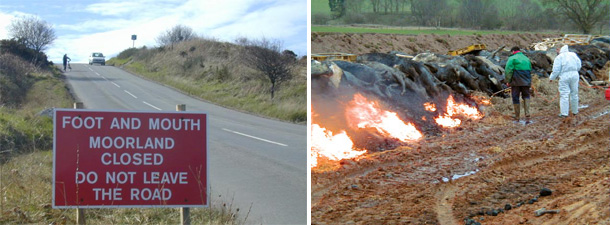
Credit: Ben Gamble, CC BY-SA 2.0, via Wikimedia Commons
Space station Mir is deorbited
The predecessor to the International Space Station, the Russian-controlled Mir had been in orbit since 1986. During that time, it hosted astronauts and cosmonauts from 12 different countries. The last crew left in 1999 and, despite attempts by private companies to purchase it, the aging space station was deemed unsalvageable. On 23rd March 2001, Mir was ditched in the Pacific Ocean near Fiji.
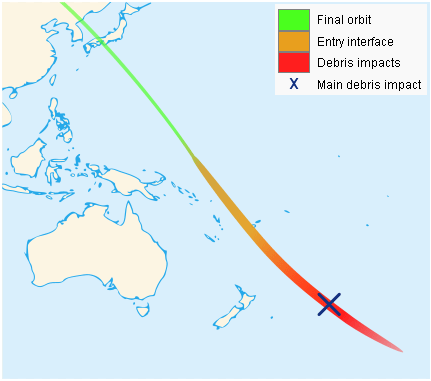
The Netherlands becomes the first country to legalise same-sex marriage
On 1st April 2001, The Act on the Opening up of Marriage went into effect in the Netherlands, which became the first country to legalise same-sex marriage.
The previous year, the bill had passed in the House of Representatives by 109 votes to 33, and in the Senate by 49 votes to 26. It received royal assent from Queen Beatrix on 21st December 2000 and took effect on 1st April 2001.
From 2001 to 2011, more than 14,800 same-sex marriages were performed in the Netherlands; 7,522 between two women and 7,291 between two men. Approximately 21,300 same-sex couples had married in the Netherlands by 2015, and over 28,000 by 2021. Roughly 20,000 of these couples were still together by 2021; the remaining having divorced, moved abroad, or one or both spouses died.
A study in 2021* showed that from 2001 onwards, levels of anxiety and depression fell drastically among individuals in same-sex relationships and largely converged to those of heterosexuals. It found that the legalisation of same-sex marriage, as well as supportive societal attitudes, significantly improved the mental health of LGBT people. The study authors concluded, "We find a significant improvement in the mental health of sexual minorities following the legislation. We also find that marriage itself was only partially responsible for the amelioration of mental health among sexual minorities. More importantly, the legal recognition of same-sex marriage improved mental health for both male and female sexual minorities irrespective of their own marital status."
The milestone of same-sex marriage in the Netherlands reflected a broader shift in societal and cultural attitudes around the world, leading to many other countries enacting similar legislation – including Belgium (2003), Canada (2005), Spain (2005) and South Africa (2006). This list had grown to 34 by 2023 and the trend showed no sign of slowing, on course to include a majority of the world's countries by the mid-2040s.

Credit: Alf van Beem, CC0, via Wikimedia Commons
The world's first space tourist
American engineer and multimillionaire Dennis Tito became the world's first space tourist on 28th April 2001. He spent nearly eight days aboard the International Space Station, Soyuz TM-31 and TM-32, orbiting the Earth a total of 128 times. Tito performed several scientific experiments that he said would be useful for his company and business. He paid a reported $20 million for his trip, through an arrangement with space tourism company Space Adventures Ltd.
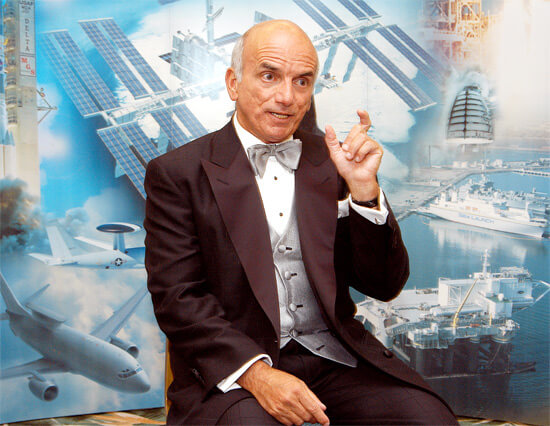
UK general election
The UK general election of 2001, originally scheduled for May but postponed until 7th June because of the foot-and-mouth crisis, saw the Labour Party, led by Prime Minister Tony Blair, win a second successive victory. The election was largely fought on domestic issues, such as health and education, with the Labour Party's campaign focusing on the theme of public investment in these areas. The Conservative Party, under the leadership of William Hague, largely failed to resonate with voters, despite attempts to highlight issues such as immigration and the Euro.
Labour won 413 seats, a net loss of 6 seats from the 1997 election, but still enough to maintain a large majority in the House of Commons. The Conservative Party won 166 seats, a modest increase of one seat from the 1997 election. The Liberal Democrats, under the leadership of Charles Kennedy, increased their share of the vote and won 52 seats, an increase of 6 seats. The voter turnout was 59.4%, the lowest in the UK's electoral history since the introduction of universal suffrage, indicating a general apathy towards the election and a lack of faith in the political process. Despite this, Blair's second victory cemented Labour's position as the dominant party in British politics at the time.
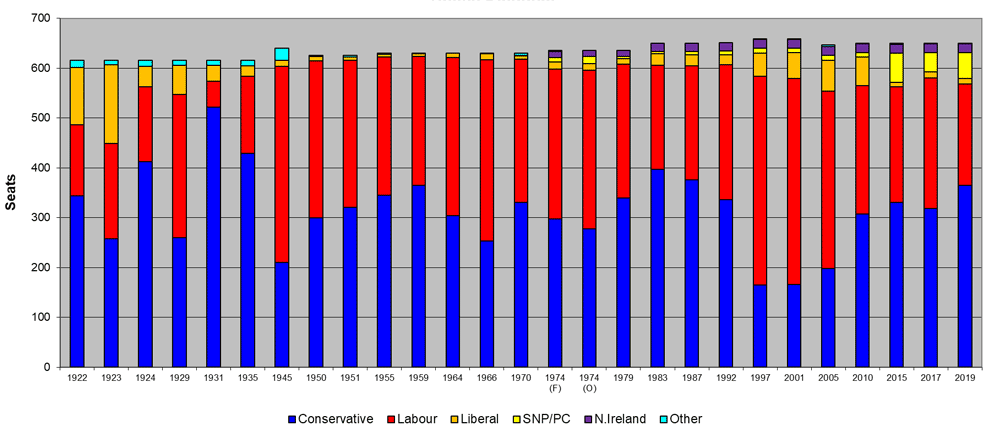
Credit: JSboundaryman, CC BY-SA 4.0, via Wikimedia Commons
Execution of Timothy McVeigh
Timothy McVeigh was an American domestic terrorist who perpetrated the 1995 Oklahoma City bombing, considered one of the deadliest acts of domestic terrorism in U.S. history. The bombing targeted the Alfred P. Murrah Federal Building, causing the deaths of 168 people, including 19 children, and injuring over 500 others. The act was a retaliation against the federal government's handling of the Waco Siege (1993) and the Ruby Ridge incident (1992), events that McVeigh claimed motivated his anti-government sentiments.
McVeigh was arrested shortly after the bombing, initially on unrelated firearm charges, and later charged with the bombing. After a trial in 1997, he was convicted on 11 federal counts, including conspiracy to use a weapon of mass destruction, use of a weapon of mass destruction, destruction with the use of explosives, and eight counts of first-degree murder for those who died in the federal building who were federal law enforcement agents.
Despite appeals, his conviction was upheld, and McVeigh was sentenced to death. He was executed by lethal injection on 11th June 2001, at the Federal Correctional Complex in Terre Haute, Indiana. His execution was the first federal execution in the United States since 1963.

Windows XP is released
Windows XP, which stood for "eXPerience," was an operating system produced by Microsoft as part of the Windows NT operating system (OS) family. It was officially released to manufacturing on 24th August 2001.
This OS represented a significant step forward from its predecessors, combining the stability of the professional versions of Windows, like Windows NT and 2000, with the compatibility and user-friendly interface of the home versions, like Windows 95, 98, and ME.
Windows XP offered a host of improvements and new features. One of the most significant was its enhanced stability and efficiency due to its basis in the Windows NT kernel, making it far more robust than the previous consumer-oriented versions of Windows. Other features included a new, more intuitive user interface with a task-based design, improved hardware support, enhanced multimedia capabilities, improved system restore, and new technologies like Remote Desktop and network setup wizards. It also improved the security and user management tools, making it more suitable for business use.
Windows XP quickly gained popularity and became one of the most widely used operating systems, running on more than 400 million computers worldwide at its peak in the mid-2000s. Microsoft ended mainstream support in 2009, although extended support continued until 2014.
A devastating terror attack leaves 3,000 dead in America
On September 11th, 2001, a series of coordinated suicide attacks took place in the United States. On that day, 19 al-Qaeda terrorists hijacked four commercial airliners. The hijackers intentionally crashed two of the airliners into the Twin Towers of the World Trade Center in New York City – killing everyone on board, along with many others working in the buildings.
Both towers – two of the tallest in the world at the time – collapsed within two hours, destroying nearby buildings and heavily damaging others. The hijackers crashed a third airliner into the Pentagon, just outside Washington, D.C. The fourth plane crashed into a field near Shanksville in rural Pennsylvania, after some of its passengers and crew attempted to retake control of the plane, which the hijackers had redirected toward Washington, D.C. There were no survivors from any of the flights.
A total of 2,973 victims and the 19 hijackers themselves died as a result of the attacks. The vast majority of casualties were civilians, including nationals from over 90 countries. In addition, the death of at least one person from lung disease was ruled by a medical examiner to be a result of exposure to dust from the World Trade Center's collapse.
Some American stock exchanges stayed closed for the rest of the week following the attack, and posted enormous losses upon reopening, especially in the airline and insurance industries. The destruction of billions of dollars' worth of office space caused serious damage to the economy of Lower Manhattan.
The United States responded to the attacks by launching a War on Terror – invading Afghanistan to depose the Taliban, who had harboured al-Qaeda terrorists, and enacting the USA PATRIOT Act. Many other countries also strengthened their anti-terrorism legislation and expanded their law enforcement powers.
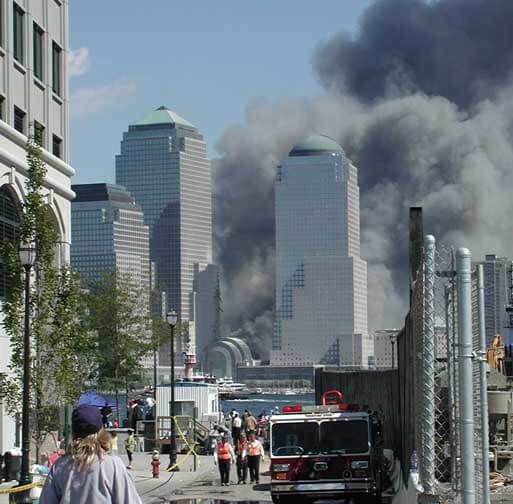
The War in Afghanistan begins
The War in Afghanistan began on 7th October 2001, when the United States, backed by the United Kingdom and an international coalition, launched Operation Enduring Freedom in response to the September 11th terrorist attacks. The Taliban regime in Afghanistan, which had been in power since 1996, was targeted because it was believed to be harbouring Osama bin Laden, the leader of al-Qaeda, the group responsible for the 9/11 attacks. The initial aim of the U.S. invasion was to dismantle al-Qaeda and deny it a safe base of operations in Afghanistan by removing the Taliban from power.
The operation began with an aerial bombing campaign. The U.S. and its allies targeted Taliban military and communications facilities, as well as training camps for al-Qaeda. The Northern Alliance, a group of anti-Taliban resistance fighters within Afghanistan, were supported by the international coalition with air support, military equipment, and Special Forces advisers. By 13th November 2001, the Taliban's rule was officially over when the Northern Alliance captured Kabul, the capital city of Afghanistan.
However, despite this early success, the war would continue for many years as coalition forces faced ongoing insurgency from the Taliban, who regrouped in rural areas and across the border in Pakistan. The U.S. war in Afghanistan would become the longest military conflict in its history, lasting until the withdrawal of U.S. troops in August 2021.
Coinciding with the withdrawal of troops, the Taliban launched a broad offensive throughout the summer, successfully reestablishing their control over the country including Kabul on 15th August. On the same day, the last President of Afghanistan, Ashraf Ghani, fled to the United Arab Emirates; the Taliban declared victory and the war was formally brought to a close.
An estimated 176,000–212,000+ people died in the war. Although 5.7 million former refugees returned to Afghanistan after the 2001 invasion, by the time the Taliban returned to power in 2021, some 2.6 million Afghans remained refugees, while another 4 million were internally displaced.
In terms of the economic costs, Brown University's Watson Institute of International and Public Affairs estimated the total cost of the war in Afghanistan to the United States to be over $2.2 trillion – not only including the direct costs of the military operation but also the related increases in the Department of Defense's base budget, spending on veterans' care, and interest on borrowing for the war.
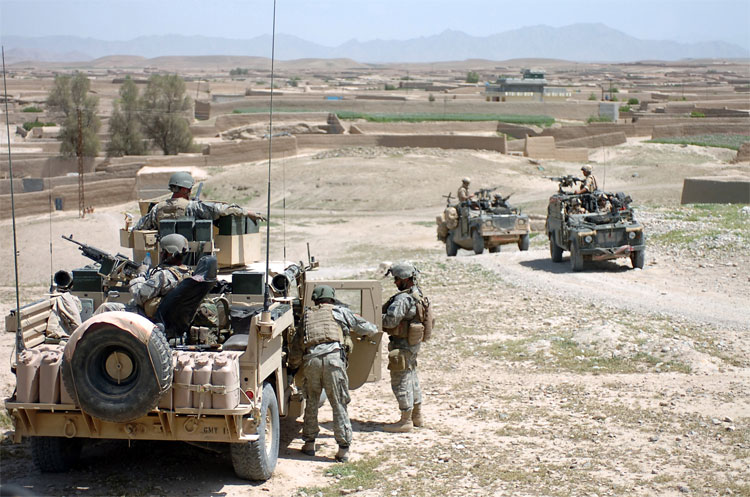
Apple launches the iPod
iPod was a new line of portable media players designed and marketed by Apple Inc. The first generation was launched on 10th November 2001. With its user-friendly interface and gigabytes of storage capacity, the iPod went on to become phenomenally successful. The introduction of the iTunes store, with millions of songs available to download, substantially boosted Apple's fortunes.
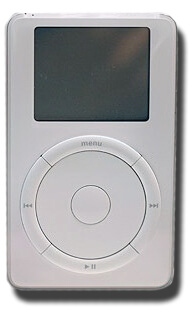
Credit: [email protected]
Launch of the Xbox game console
The Xbox, Microsoft's first venture into the console gaming market, was officially launched on 15th November 2001 in North America. The console's release was a part of the sixth generation of game consoles, rivalling Sony's PlayStation 2, Nintendo's GameCube, and Sega's Dreamcast. Its launch was highly anticipated, given Microsoft's clout as a major tech company and the powerful specs it promised, including a 733 MHz Intel Pentium III processor. It was also the first video game console to feature a built-in hard disk drive, a novelty among consoles at the time, used primarily for storing game saves and content downloaded from the Xbox Live service.
The Xbox launch was accompanied by a robust lineup of games, with Halo: Combat Evolved leading the charge as the console's flagship title. This game soon turned into a major franchise, helping the Xbox gain significant traction in the market. Microsoft's launch strategy involved heavy marketing to ensure widespread retail distribution. Despite initial scepticism from industry insiders and fierce competition from well-established players, the Xbox made a successful entry into the gaming console industry, eventually laying the groundwork for future consoles like the Xbox 360 and Xbox One.
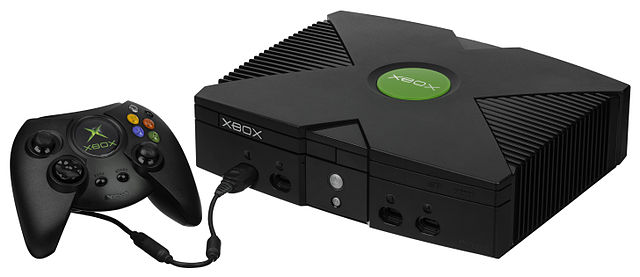
The first atmosphere detected on an extrasolar planet
The first confirmed exoplanet discovery occurred in 1992, with two terrestrial-mass planets found orbiting the pulsar PSR B1257+12. The first exoplanet orbiting a main-sequence star followed three years later, in 1995, when astronomers announced a "hot Jupiter" orbiting the G-type star 51 Pegasi.
Another milestone in exoplanet studies occurred on 27th November 2001, when astronomers using the Hubble Space Telescope reported the discovery of sodium in the atmosphere of Osiris, also known as HD 209458 b. This planet, located 159 light years away, was found to have a radius about 1.35 times that of Jupiter and a mass of 0.69 Jupiters, orbiting the Sun-like star HD 209458.
Its very close orbit around the star, just 3.5 Earth-days long, gave Osiris an estimated temperature of 1,200 K (927 °C; 1,700 °F) and a "transition zone" in the outer atmosphere with much higher temperatures of 5,500 K (5,227 °C; 9,440 °F). This intense heat was shown to be expanding the atmosphere and causing it to produce a comet-like tail of hydrogen, carbon, and oxygen, with even higher temperatures of up to 15,000 K.
Astronomers estimated the planet to be losing between 100 and 500 million kg (0.2–1 billion lb) of hydrogen per second, and predicted a 7% loss of mass (equivalent to about 15 Earth masses) over its lifetime of 5 billion years.
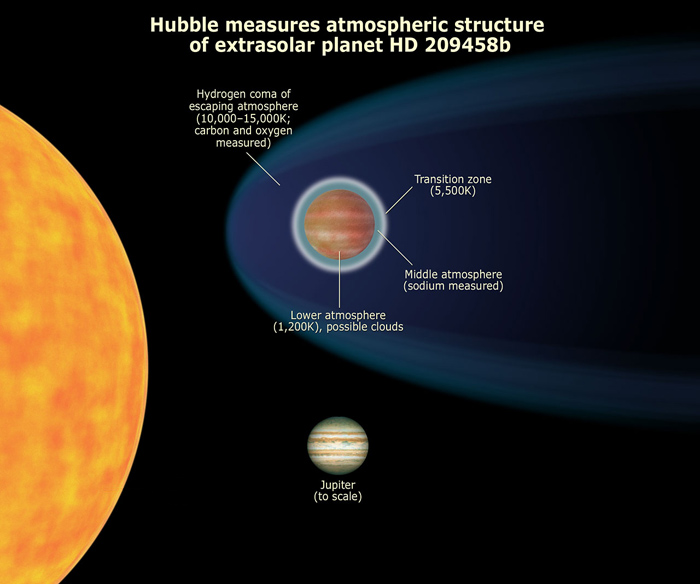
Credit: NASA, ESA, and A. Feild (STScI)
Enron files for Chapter 11 bankruptcy
The Enron scandal, which came to light in late 2001, became one of the most notable cases of corporate fraud and corruption in history. Enron Corporation was an American energy, commodities, and services company based in Houston, Texas. Once regarded as a blue-chip stock and named "America's Most Innovative Company" by Fortune for six consecutive years, Enron's downfall began when it was revealed that much of its profits and revenue were the result of deals with special purpose entities (SPEs), many of which were backed by the firm's own stock.
In October 2001, Enron reported its first quarterly loss and a $1.2 billion reduction in shareholder equity, stemming from accounting write-offs and a restatement of its financial statements for the previous four years to account for the SPEs. These actions aroused suspicion that Enron's reported profitability was not genuine, leading to an investigation by the Securities and Exchange Commission (SEC).
The situation escalated quickly, and by late November, Enron revealed its financial situation to be even worse than suspected, with another $591 million in losses and writedowns and $690 million in debt. These revelations triggered a crisis of confidence among investors, causing Enron's share price to plummet – from over $90 during mid-2000 to less than $1 by the end of November 2001. Enron filed for bankruptcy on 2nd December 2001, marking the largest bankruptcy in U.S. history at the time.
John Baxter, former chairman and CEO of Enron North America, and later its Chief Strategy Officer, had been subpoenaed to appear in front of two congressional committees in February 2002 over the failure of Enron, and was named in a class-action lawsuit by workers. On 25th January 2002, however, he was found dead in a parked Mercedes from a gunshot to the head. The coroner subsequently returned a suicide verdict.
The Enron scandal led to new regulations and legislation, such as the Sarbanes–Oxley Act, designed to increase the accuracy of financial reporting for publicly traded companies.
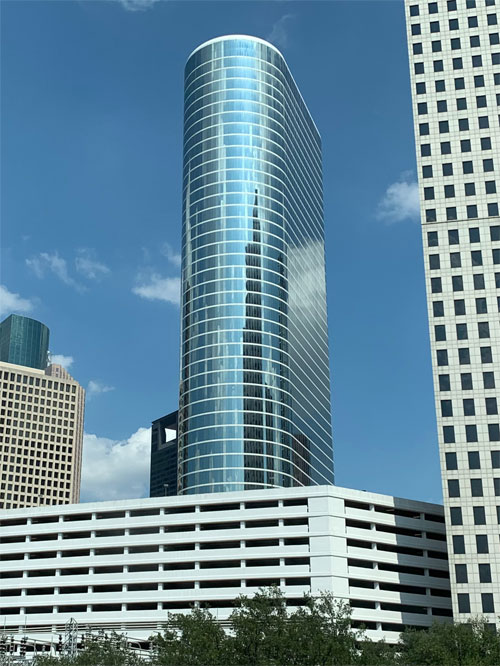
Enron headquarters at 1400 Smith Street, Houston, Texas.
Credit: Dewliter, CC BY-SA 4.0, via Wikimedia Commons
China joins the World Trade Organization (WTO)
Until the 1970s, China's economy was managed by the communist government and was kept closed from other economies. Alongside political reforms, China in the early 1980s began to open its economy and signed a number of regional trade agreements. China gained observer status in the General Agreement on Tariffs and Trade (GATT) and from 1986, began to work towards joining that organisation.
China aimed to be included as a World Trade Organization (WTO) founding member in 1995 (which would validate it as a world economic power) but this attempt was thwarted because the United States, European countries, and Japan requested that it first reform various policies, including tariff reductions, open markets, and industrial policies.
After the 1997 Asian financial crisis, China sold off or merged many unprofitable state-owned enterprises. In 1998, it reformed its State Council to greatly reduce the mandate of the State Planning Commission and increase the power of the State Economic and Trade Commission. This shift also corresponded to the change in premiership from Li Peng to Zhu Rongji, the latter of whom strongly believed that China needed deeper economic restructuring.
This restructuring included crackdowns on corruption and the establishment of chambers of commerce. The WTO Ministerial Conference of 1999 was the penultimate step before Chinese accession.
On 11th December 2001, China officially became a member of the WTO, marking a major milestone for its integration into the global economy. This was the culmination of a long and arduous negotiation process, marked by intensive economic reforms within the country, and painstaking bilateral and multilateral talks with existing WTO members on terms of membership. In a related development, the United States granted permanent normal trade status to China two weeks later on 27th December.
Joining the WTO required China to commit to further liberalising its economy, reducing trade barriers, improving transparency, and abiding by the WTO's rules for international trade. As the world's most populous nation, and one with a rapidly expanding economy, China's inclusion significantly expanded the global market.
Between 2001 and 2007, China's GDP growth rate increased from 8.3% to 14%. Although slowing after 2008, it nevertheless continued to catch up with the United States in terms of total GDP – which grew from $1.3 trillion in 2001 to $17.7 trillion by 2021, a nearly fourteen-fold increase. China's success was driven by factors including massive infrastructure development, expanded manufacturing, and a rising middle class that boosted domestic consumption.
However, while opportunities arrived for foreign businesses seeking access to the massive Chinese market, new challenges began to emerge for workers in Western countries. The offshoring and outsourcing of jobs proved particularly controversial, as many companies now took advantage of lower labour and production costs in China. This led to a significant shift of manufacturing from the United States, Europe, and elsewhere to China.
The perception of unfair competition from Chinese industries became another issue. Some in the West argued that China failed to fully comply with the rules established by the WTO, accusing it of intellectual property theft, dumping products at unfairly low prices, and providing state subsidies to its industries in a way that created an uneven playing field. China's compliance with trade rules would be a subject of debate and tension for many years to come – particularly with major trading partners like the United States.
China's human rights record was yet another area of concern. Some critics argued that by allowing China into the WTO, the West was effectively condoning its record on issues like workers' rights and political freedoms.
Lastly, rapid industrialisation and a surge in fossil fuel consumption – particularly coal power – led to major environmental impacts. By 2006, China would overtake the United States to become the world's largest emitter of greenhouse gases.
These and other subjects contributed to debates about the benefits and drawbacks of globalisation, and would be a key factor in the rise of economic nationalism and protectionism in some Western countries over subsequent decades.
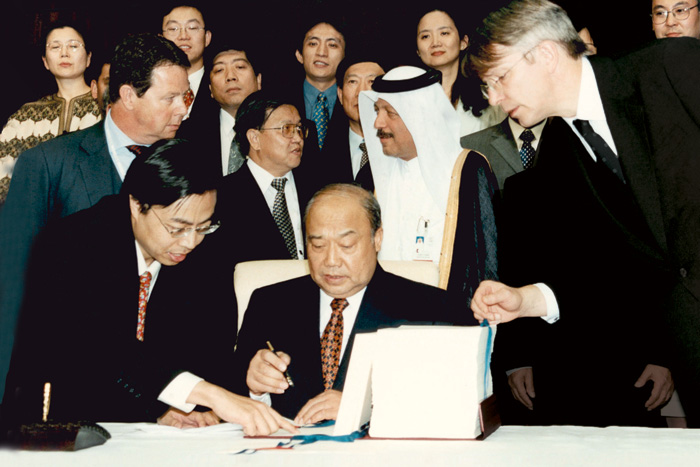
11th December 2001: China officially joins the World Trade Organization (WTO), becoming its 143rd member. Credit: WTO.
« 2000 |
⇡ Back to top ⇡ |
2002 » |
If you enjoy our content, please consider sharing it:
References
1 Image credits:
Top-left: Own work from User:Chumwa, CC BY-SA 4.0, via Wikimedia Commons
Bottom-left: Uwe Dedering, CC BY-SA 3.0, via Wikimedia Commons
Top-right: Gabriel N, CC BY-SA 3.0, via Wikimedia Commons
Bottom-right: Vm1207, CC BY-SA 4.0, via Wikimedia Commons
2 In sickness and in health: The mental health effects of same-sex marriage legalisation, Centre for Economic Policy Research:
https://cepr.org/voxeu/columns/sickness-and-health-mental-health-effects-same-sex-marriage-legalisation
Accessed 25th June 2023.
![[+]](https://www.futuretimeline.net/images/buttons/expand-symbol.gif)






